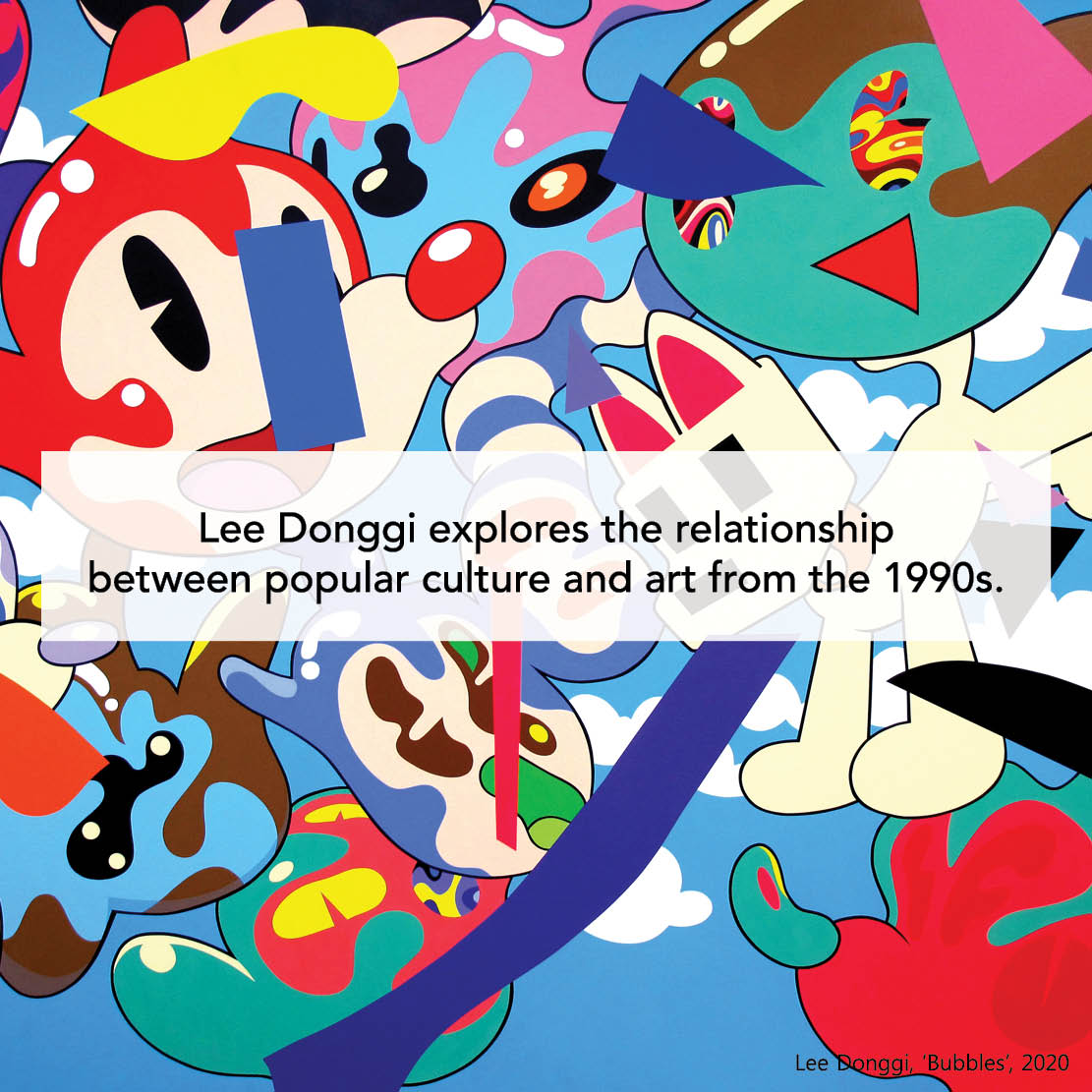A growing number of artists create artworks in a cartoon-like or anime style these days. This trend is not just because this particular form of art is getting popular among collectors but also because animation and cartoons have significantly impacted today’s society. They have become a form of entertainment that people enjoy from their childhoods, creating shared memories among many people; therefore, they have become an important reflection of the contemporary age.
Lee Donggi (b. 1967) is one of the first artists in Korea who adapted imagery from animation into art. Lee especially gained much attention by developing the original character of Atomaus and depicting it in his paintings.

Artist Lee Donggi. Photo by Moon So-young. © Moon So-young.
Atomaus first appeared in 1993, created by combining Disney’s Mickey Mouse and Japan’s Atom, two different cartoon characters representing each country’s cultural power.
American popular culture has had a global cultural impact, and South Korea has also been greatly influenced by its power. And there has been a strong Japanese influence on Korean culture due to the long history of Japanese–Korean relations.
Lee’s Atomaus is partly a satire of Korean culture, which has been influenced by the two cultural powers, but it is also a character that mirrors the present-day Korea, which has absorbed different cultures and created a distinctive blend of its own, just like Atomaus.

Lee Donggi , 'Bubbles', 2008, acrylic on canvas, 120x120cm. Copyright of the Artist.
Atomaus repeatedly appears in Lee’s paintings but with different identities to reflect various situations, such as characters from Korean traditional masterpieces, figures from Buddhist paintings, or even famous rock stars. Through Atomaus, Lee brings together disparate elements such as the past and present, east and west, figurative and abstract, and high culture and popular culture.
Other representative series of Lee’s works include Eclecticism and Abstract Painting. In the Eclecticism series, Lee overlaps and layers various images from popular culture such as cartoons and advertisements. The Abstract Painting series is more geometrical, with mosaic-like colored squares forming grid patterns and images that look like enlarged dots covering the canvas.

Partial installation view of "Pentagon" at PIBI Gallery, 2021.ⓒ Lee Donggi / PIBI GALLERY
Lee Donggi started to incorporate pop culture elements into his work to escape from abstract painting and Minjung art, which were the two mainstream movements in Korean modern art when he started his career as an artist. Lee believed that the two art forms emphasized particular values and were reductive, which prevents art from containing diversity and complexity. Thus, Lee’s works are the result of attempting to reflect the contemporary society that values diversity.
 Exhibition view of "LEE DONGI : 2015 ~ 2018." PIBI Gallery. Seoul, 2019.ⓒ Lee Donggi / PIBI GALLERY
Exhibition view of "LEE DONGI : 2015 ~ 2018." PIBI Gallery. Seoul, 2019.ⓒ Lee Donggi / PIBI GALLERYLee Donggi has held solo exhibitions in various countries, including the United States, Germany, the Netherlands, China, and Japan, as well as at major art institutions in Korea. His works are included in the collections of many institutions, including the National Museum of Modern and Contemporary Art (Gwacheon), the Leeum Museum of Art (Seoul), Artsonje Center (Seoul), the Seoul Museum of Art (Seoul), Suwon I’Park Museum of Art (Suwon), Willock Property (Hong Kong), the National Dr. Sun Yat-Sen Memorial Hall (Taipei), the Hite Collection (Seoul), and more.
Lee Donggi’s artwork is currently on view at Masquerade, a group exhibition taking place at the National Museum of Modern and Contemporary Art (Gwacheon) until July 13, 2022.



















